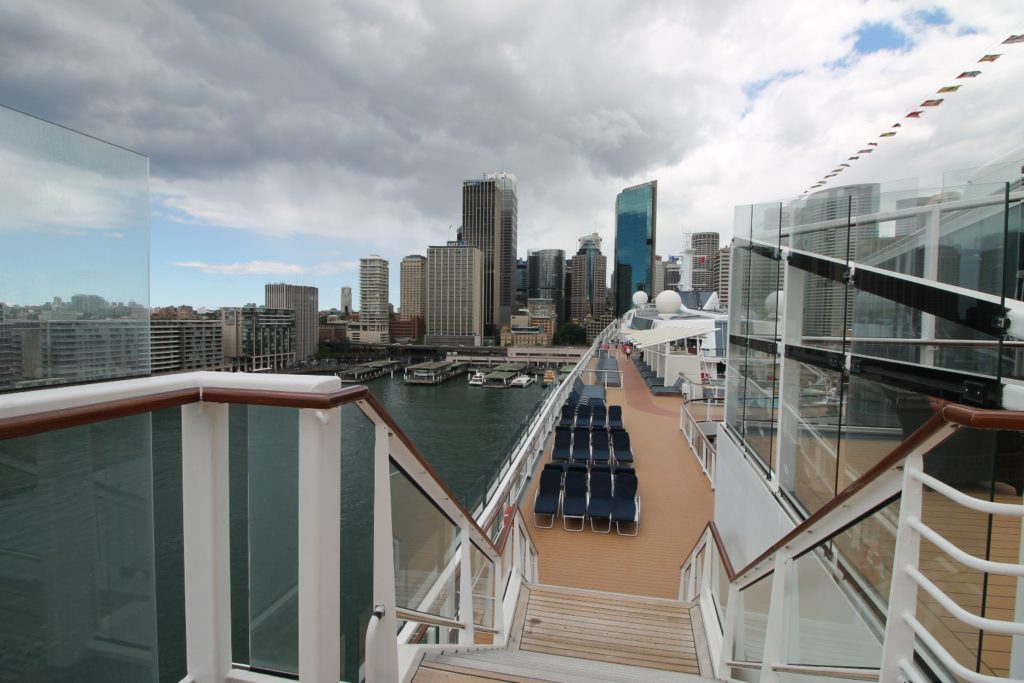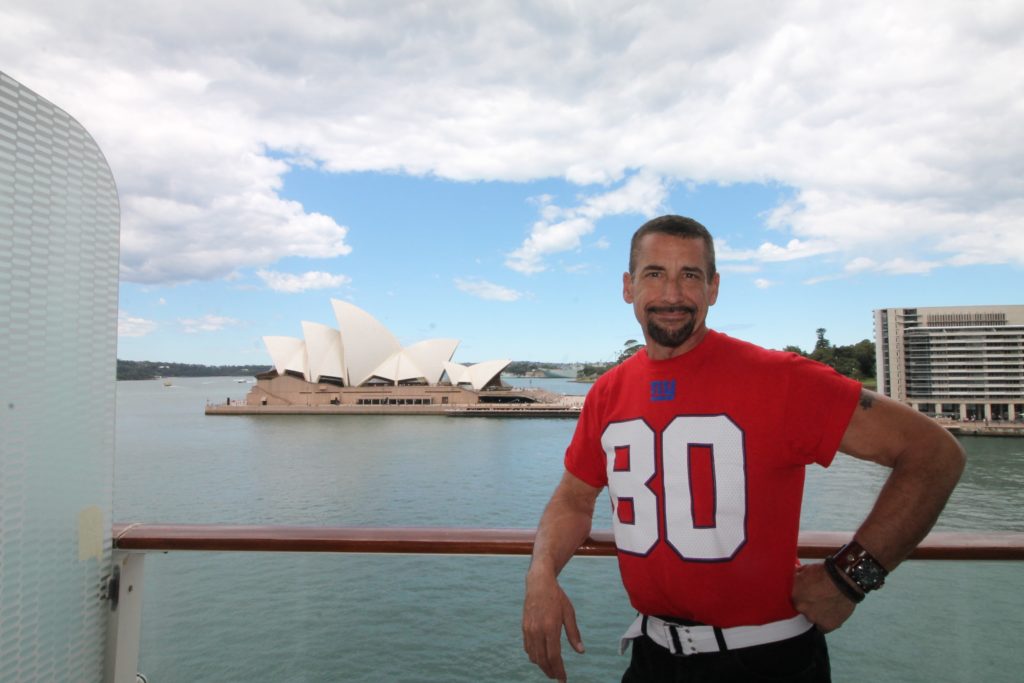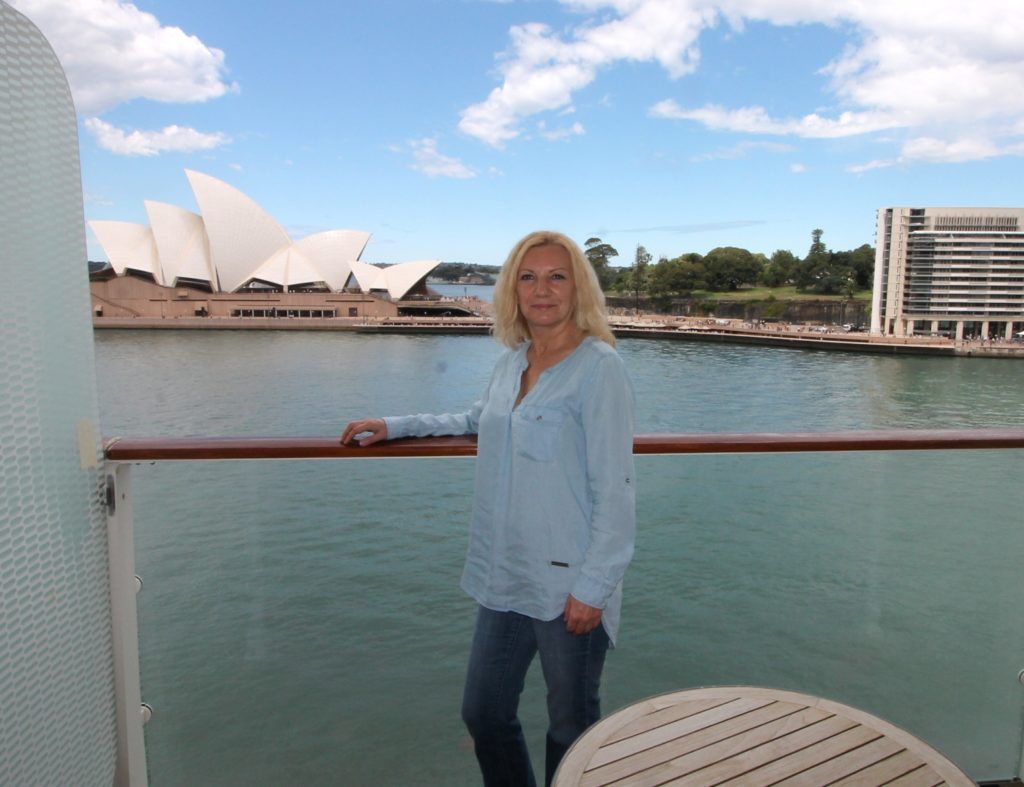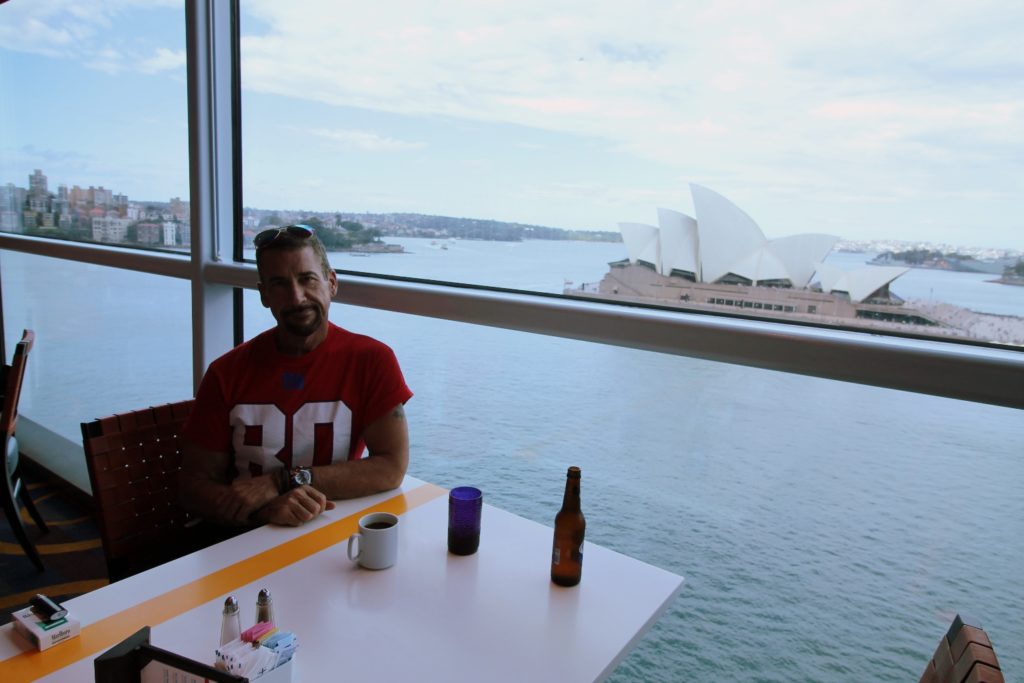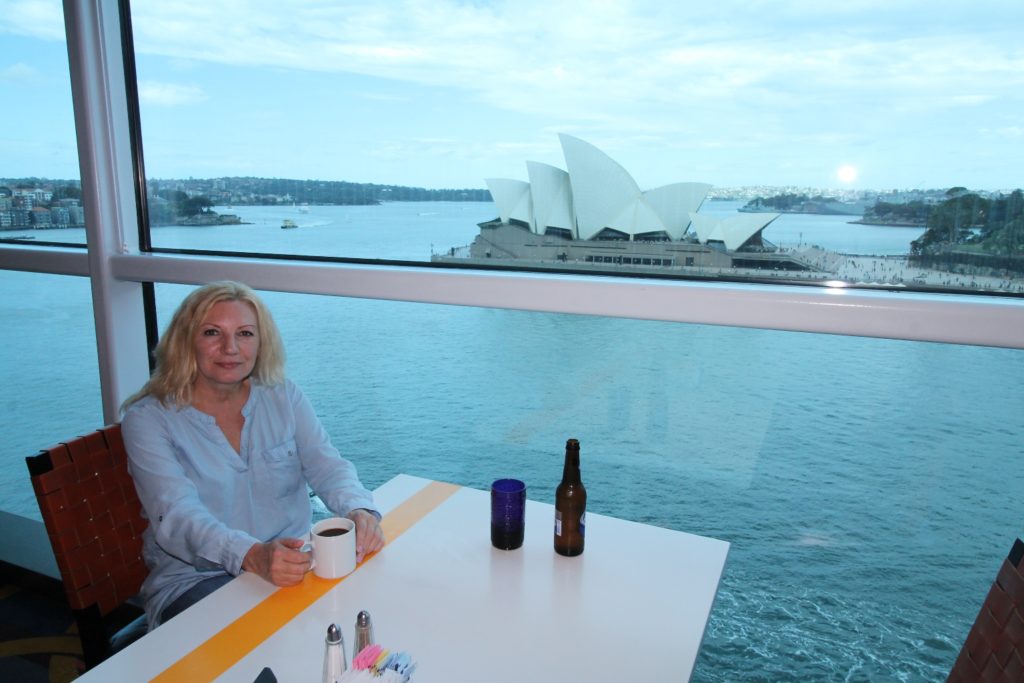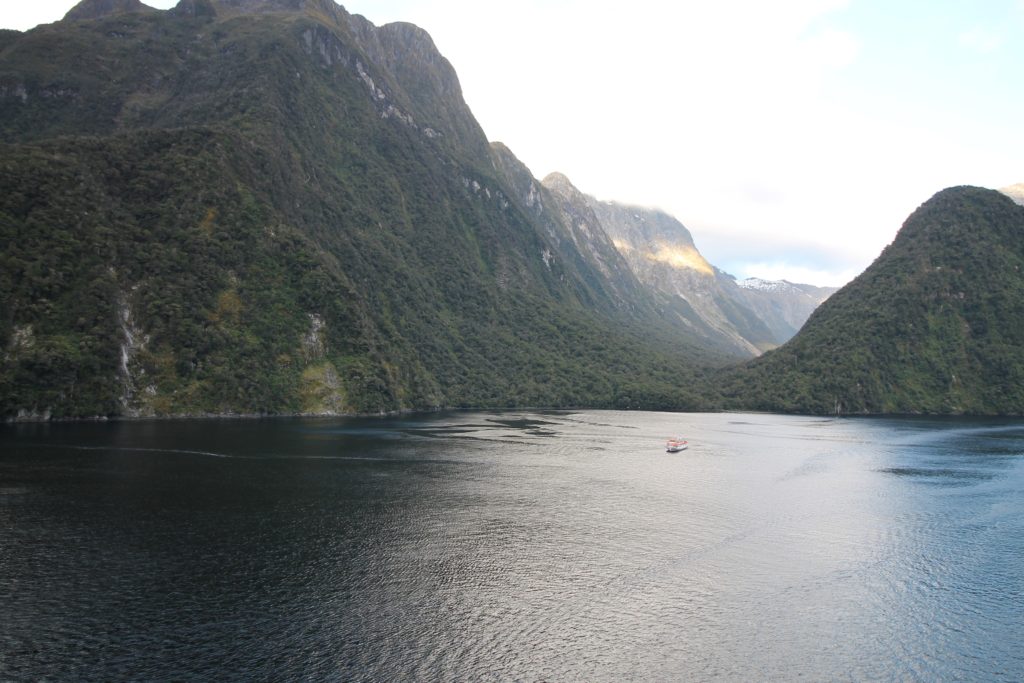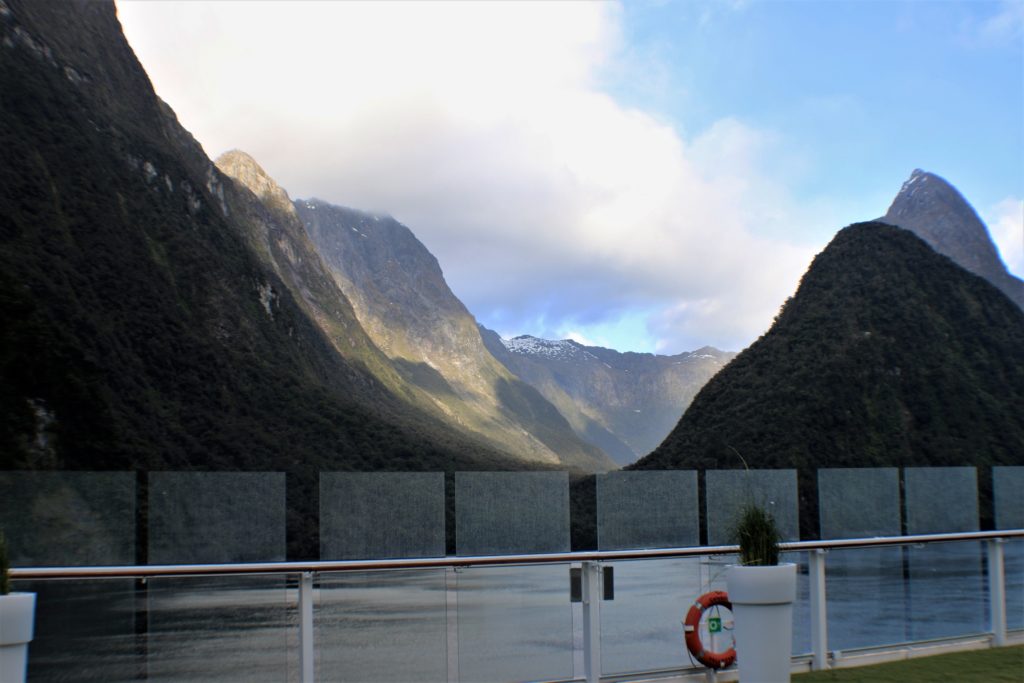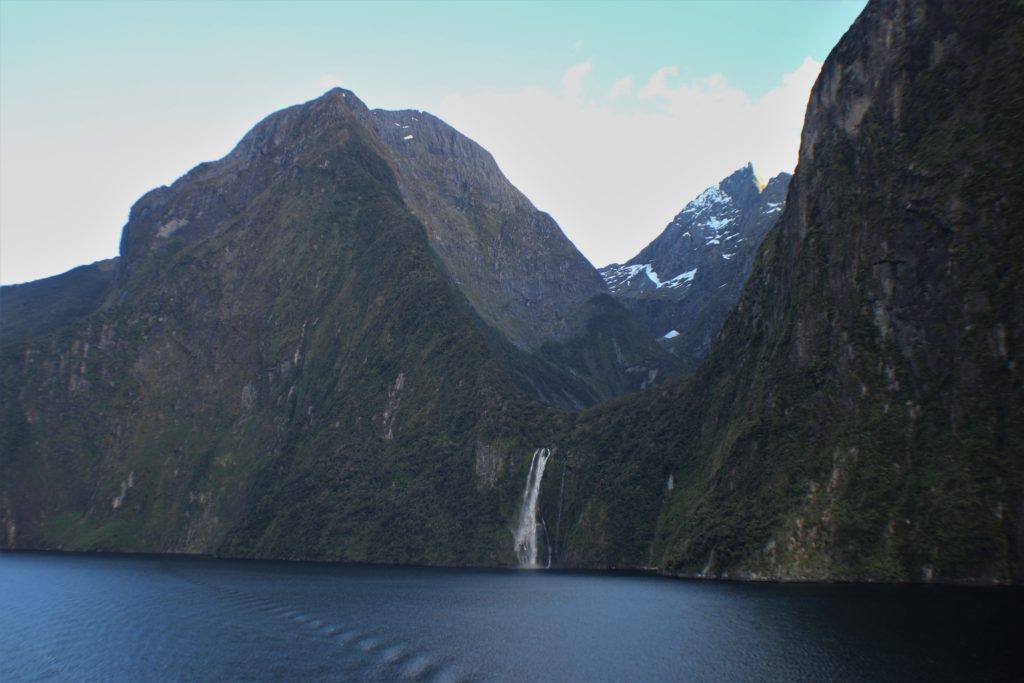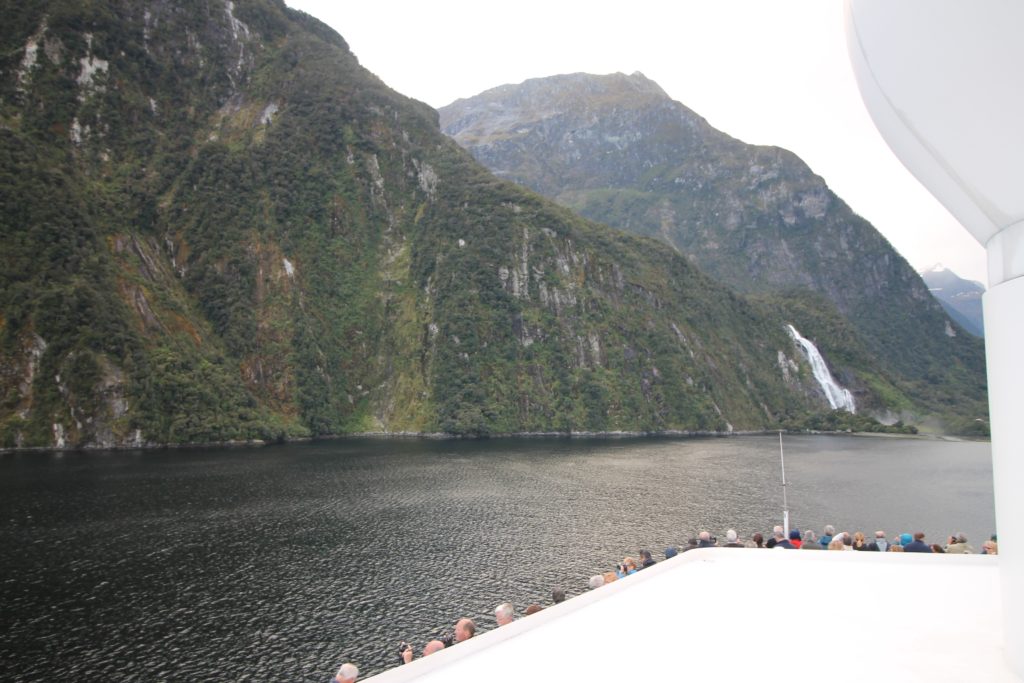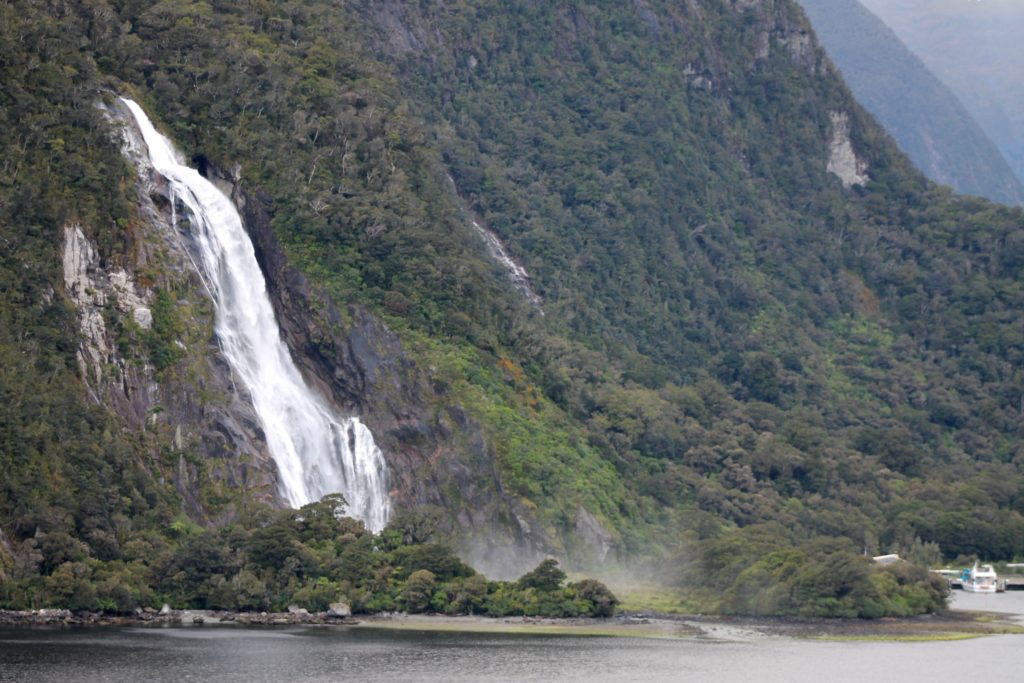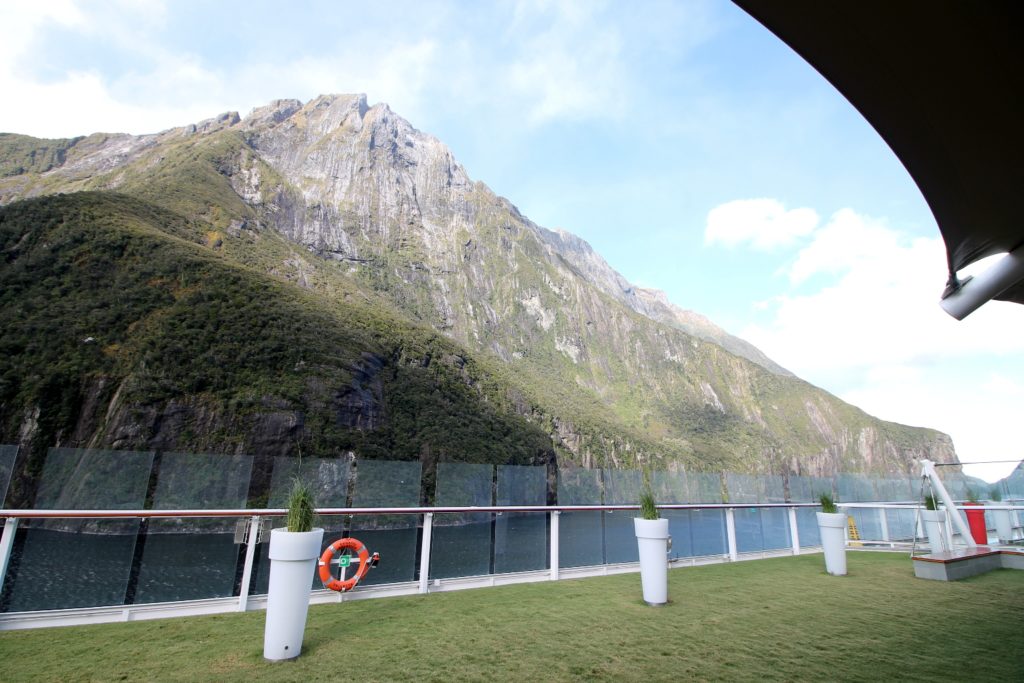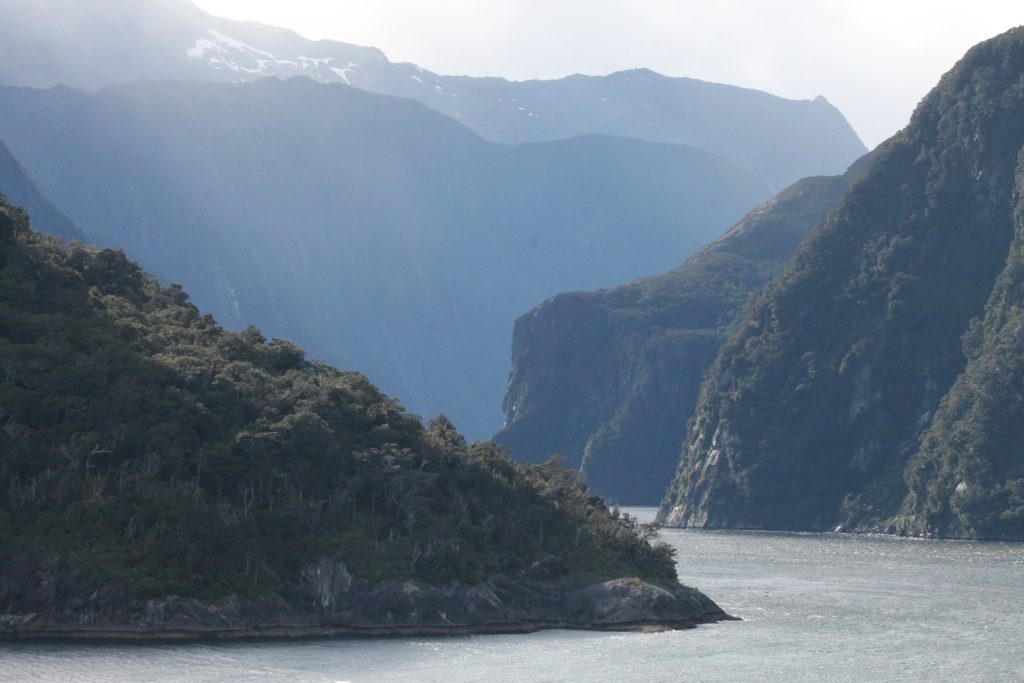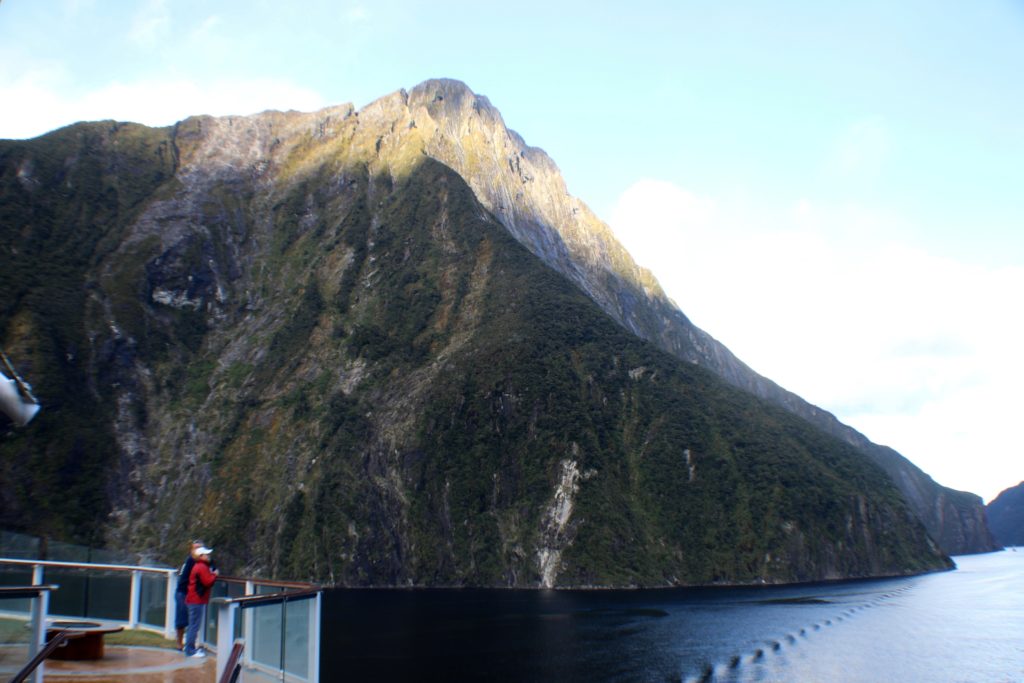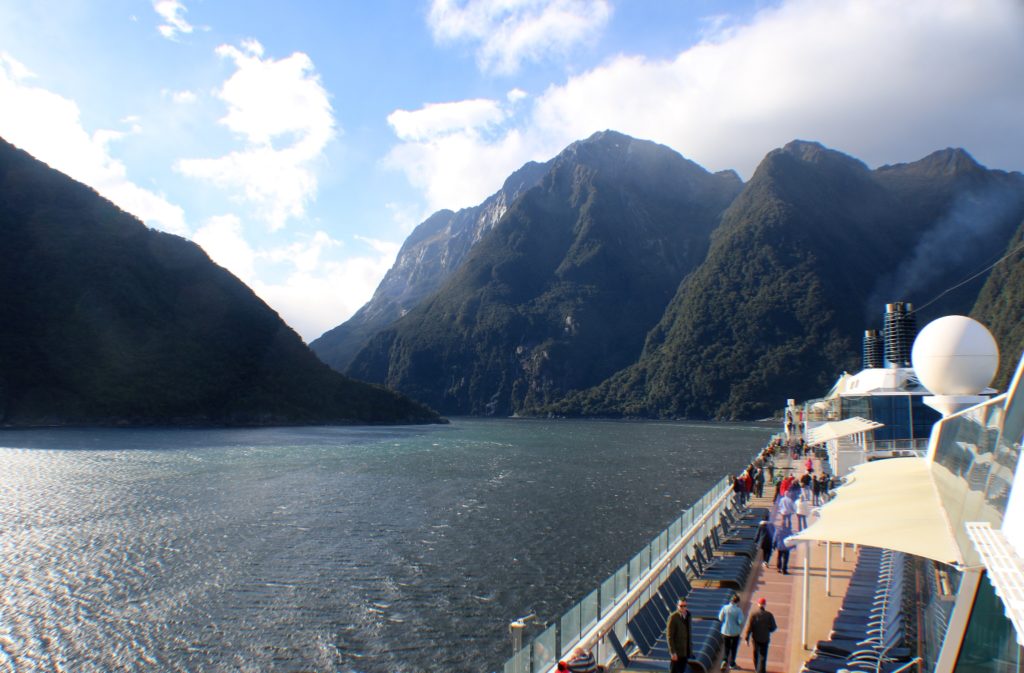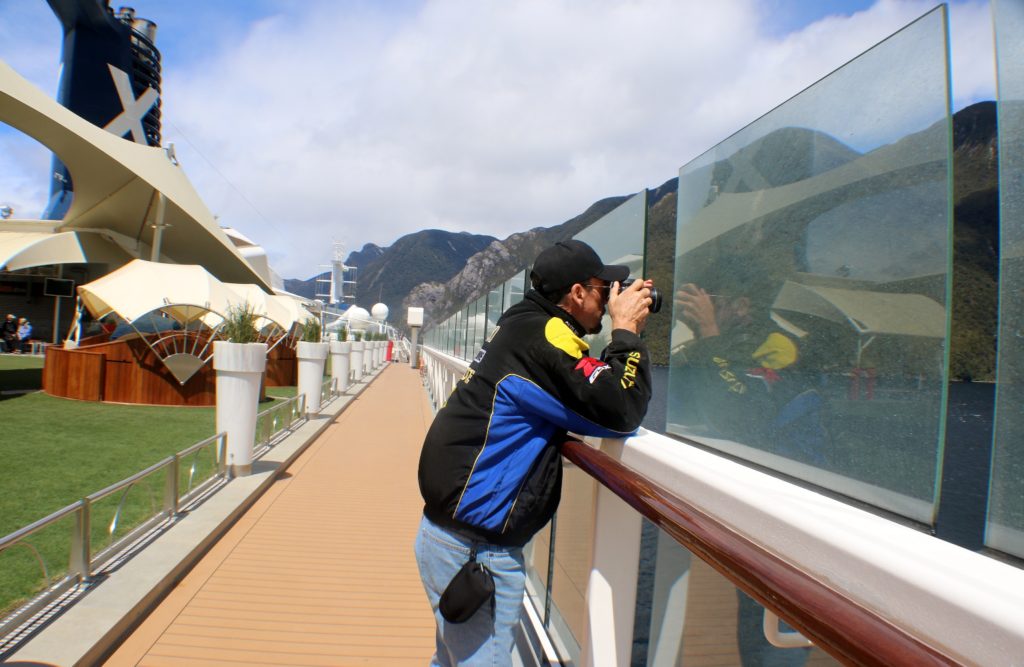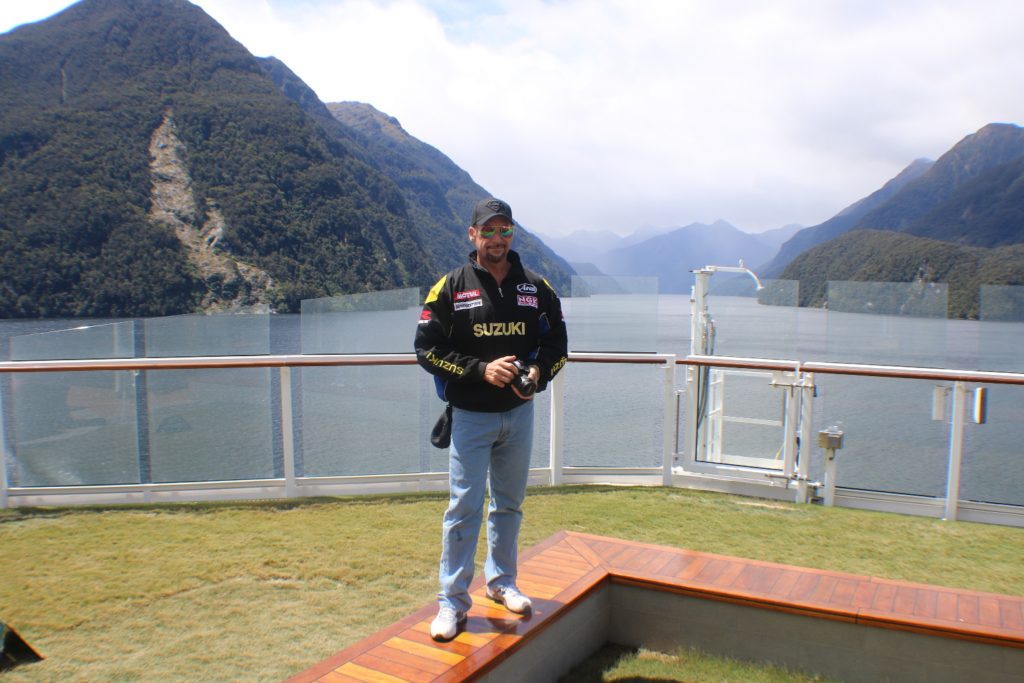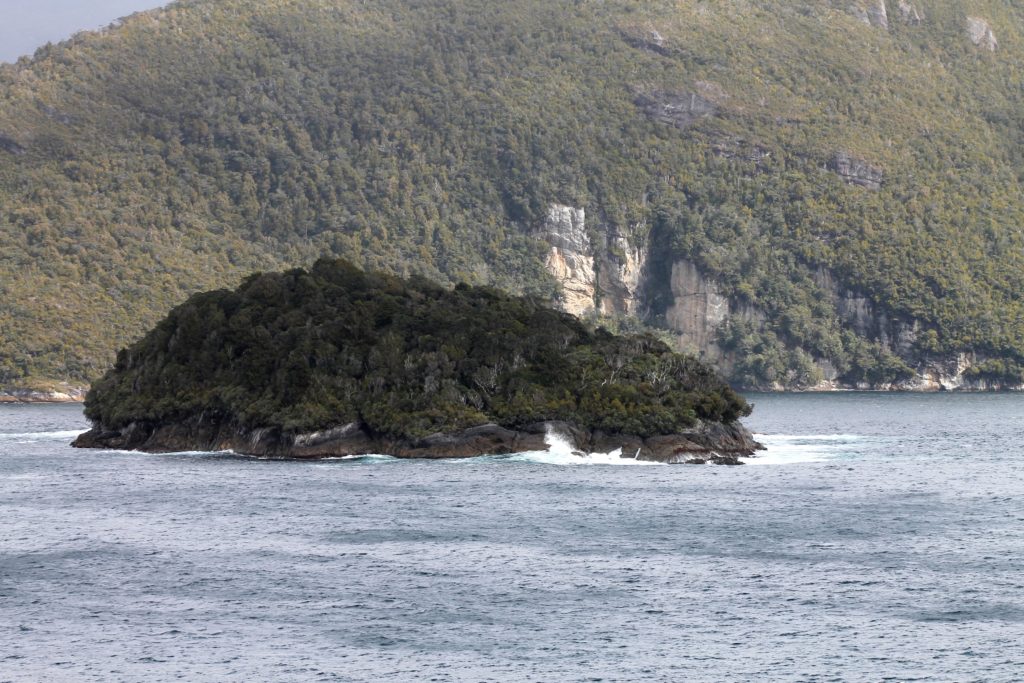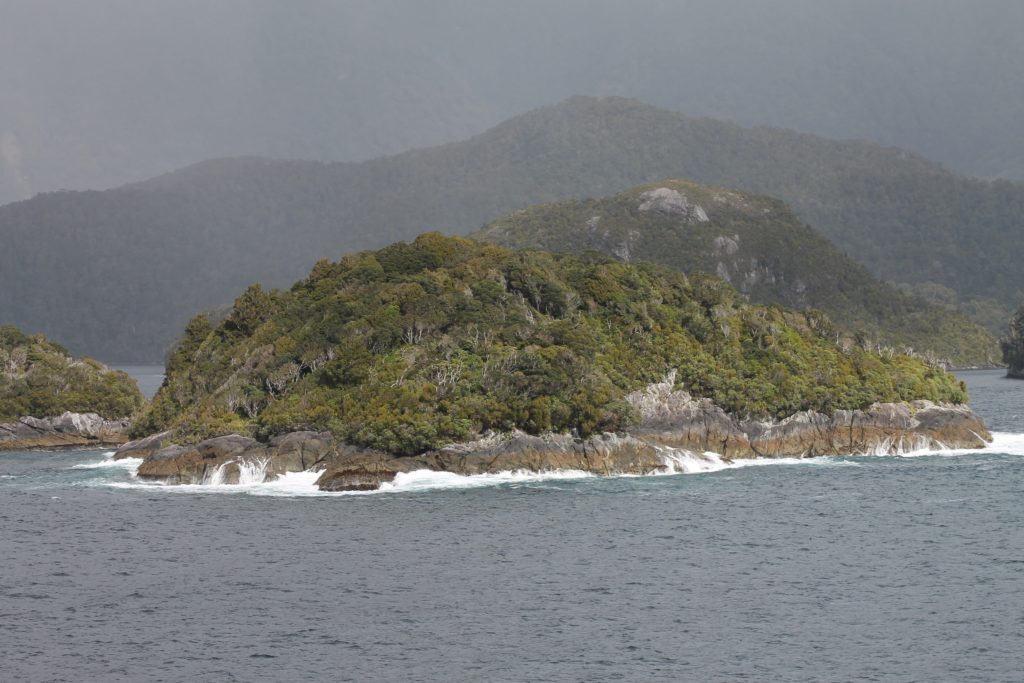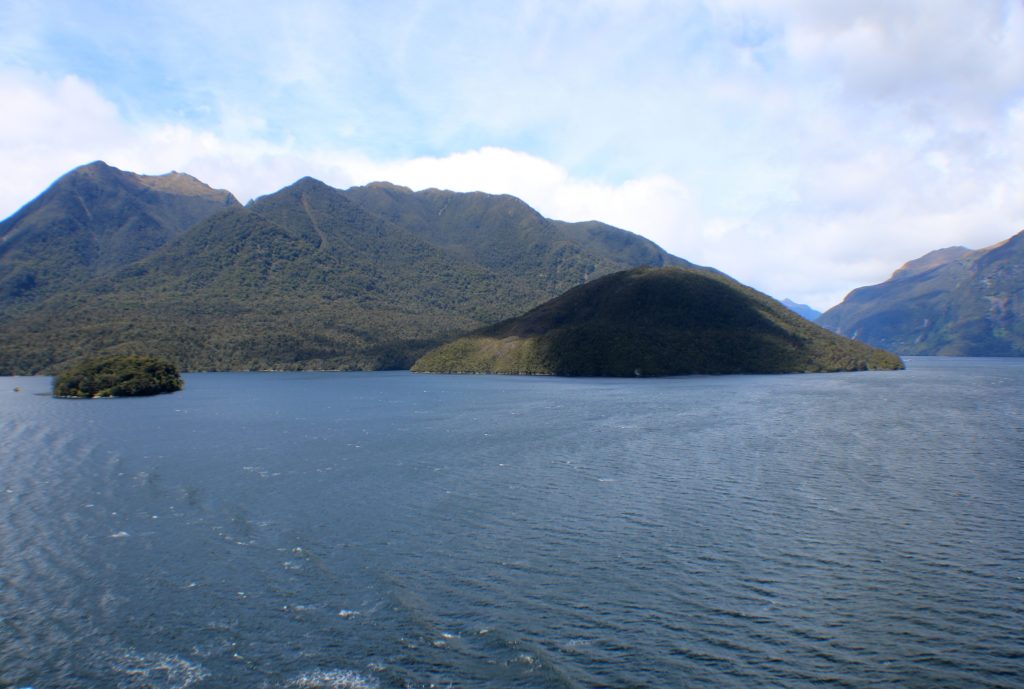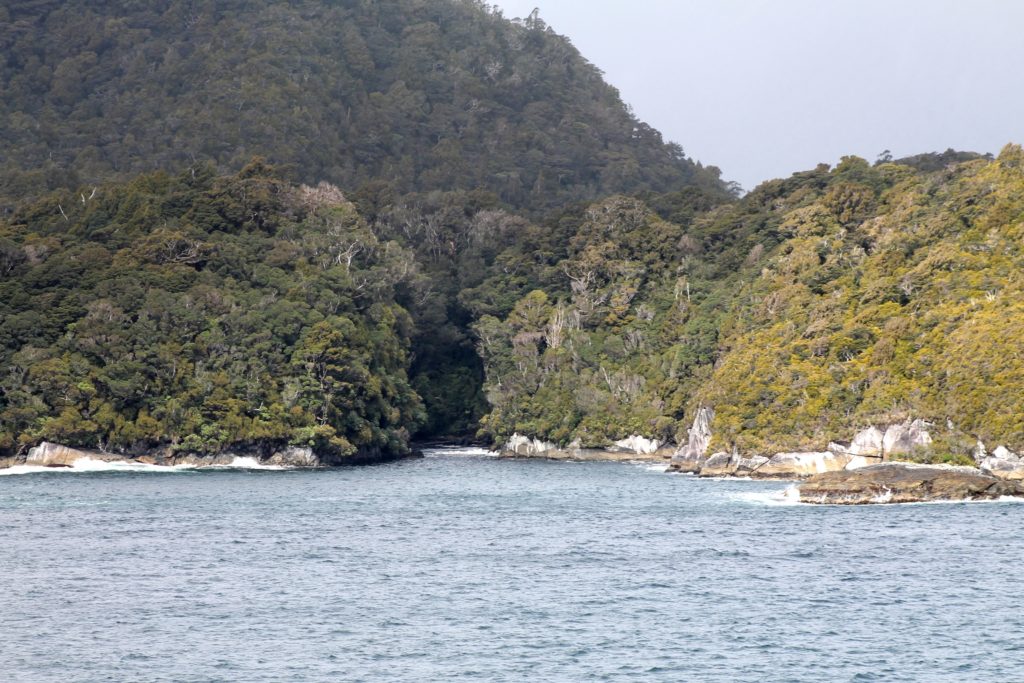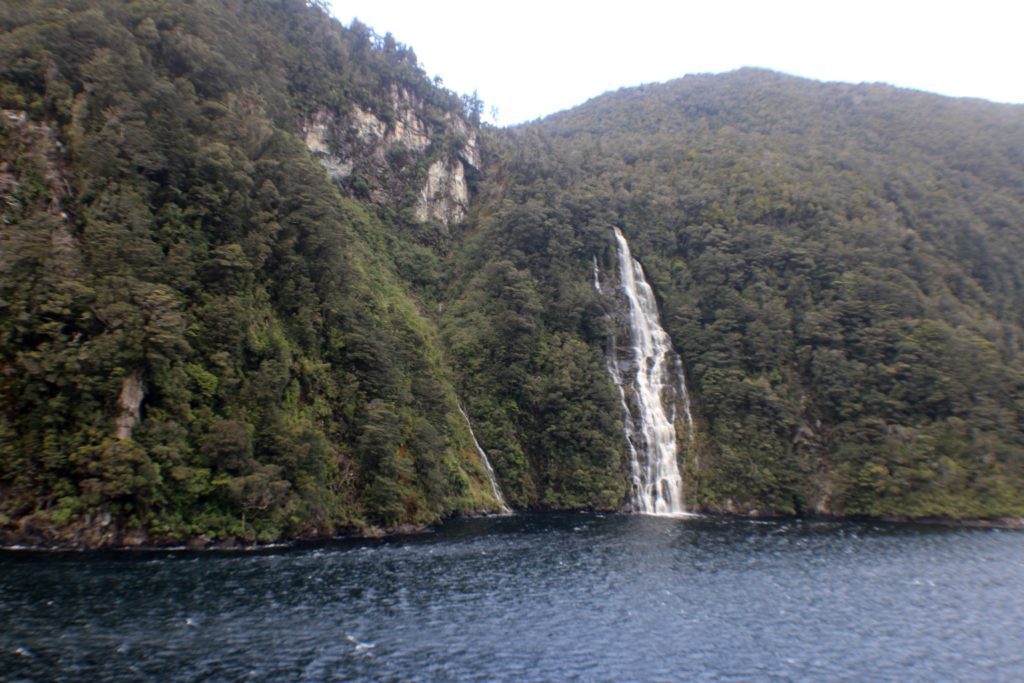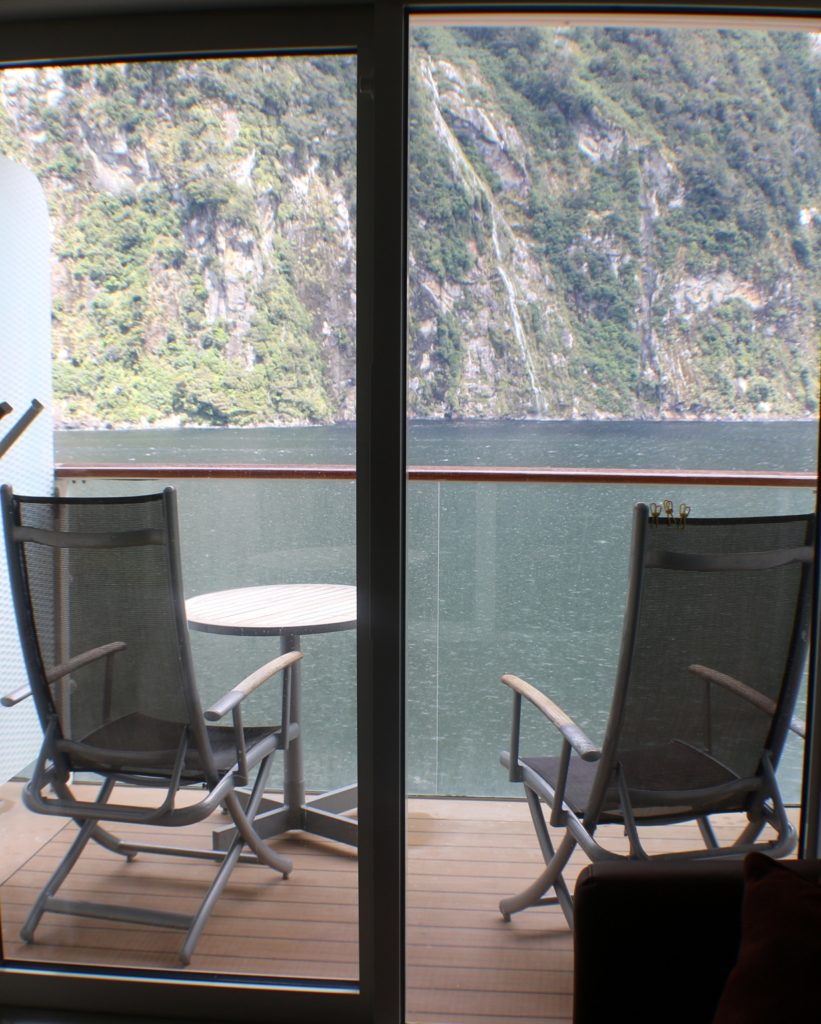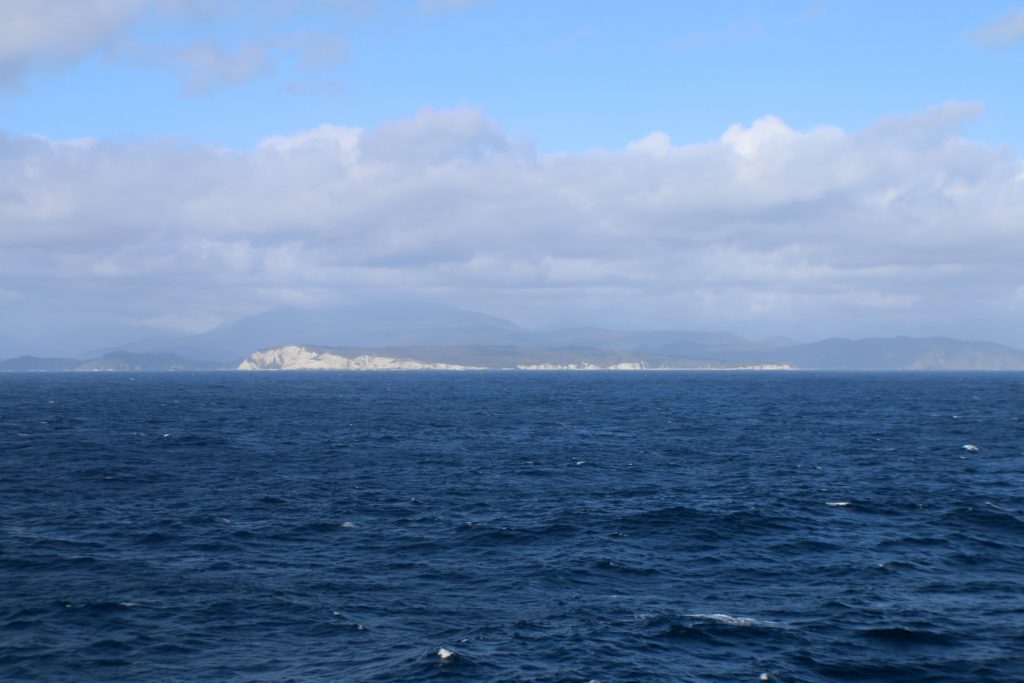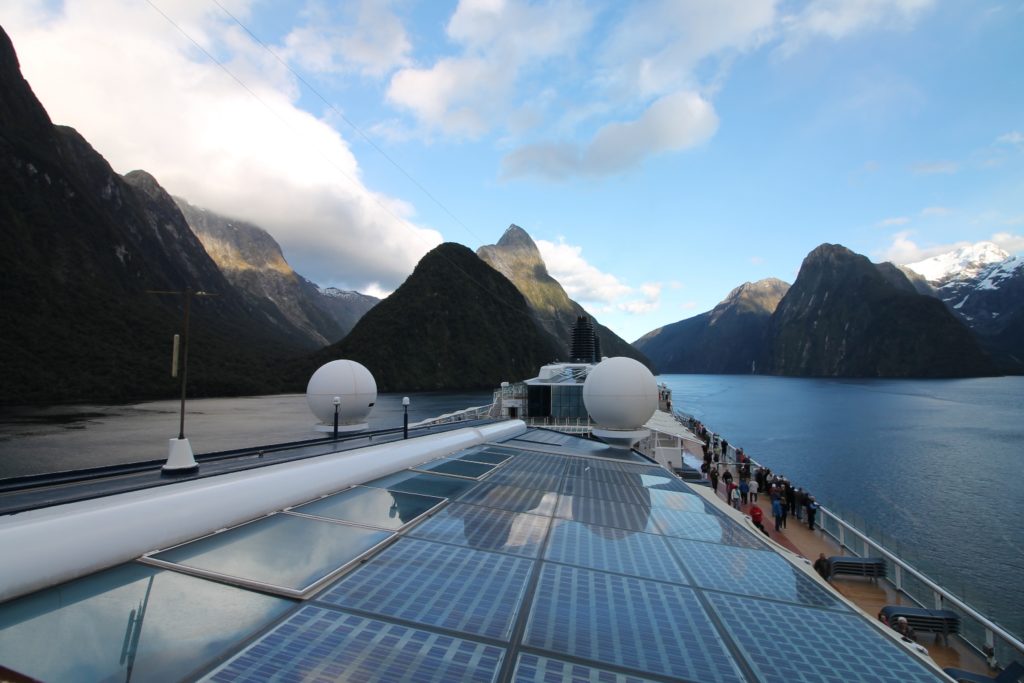
On this day, our 12-day New Zealand cruise has begun. Our Celebrity Solstice ship departed from Sidney towards New Zealand’s South Island to Fiordland. This remarkable natural environment features stunning fiords, spectacular waterfalls and snow-capped peaks.
Here we are still in Sidney, right before our departure.
Had to take a couple more pictures of the stunning Opera House from our cabin balcony.
Also, we enjoyed this architectural marvel from the windows of the cruise ship restaurant.
And one more of the Opera House close-ups, while passing by with the ship.
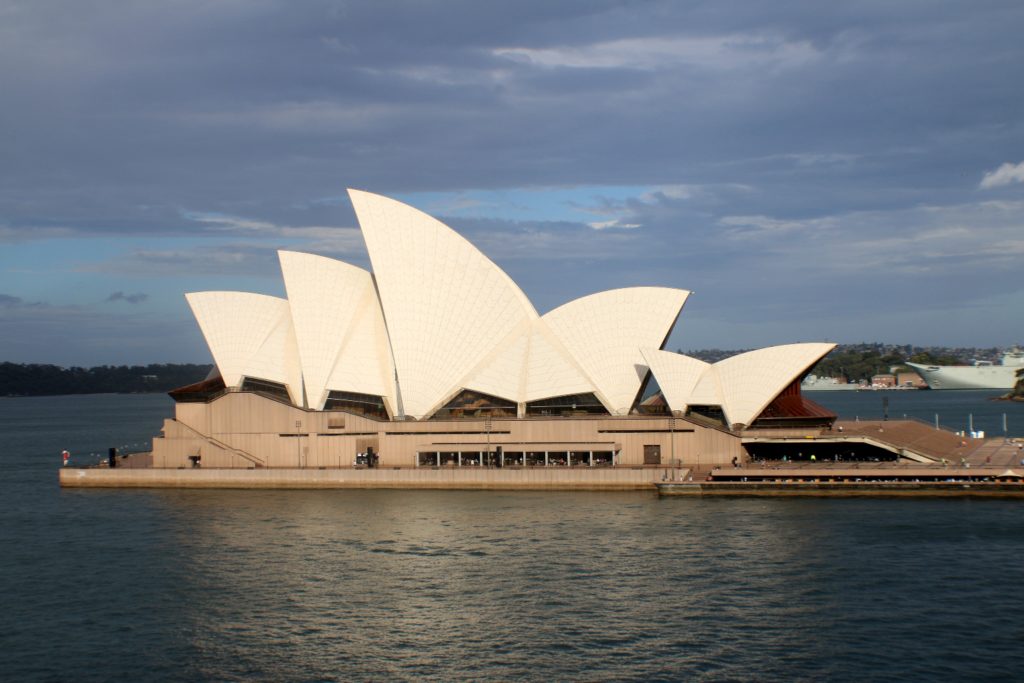
This photo was taken by the ship crew.
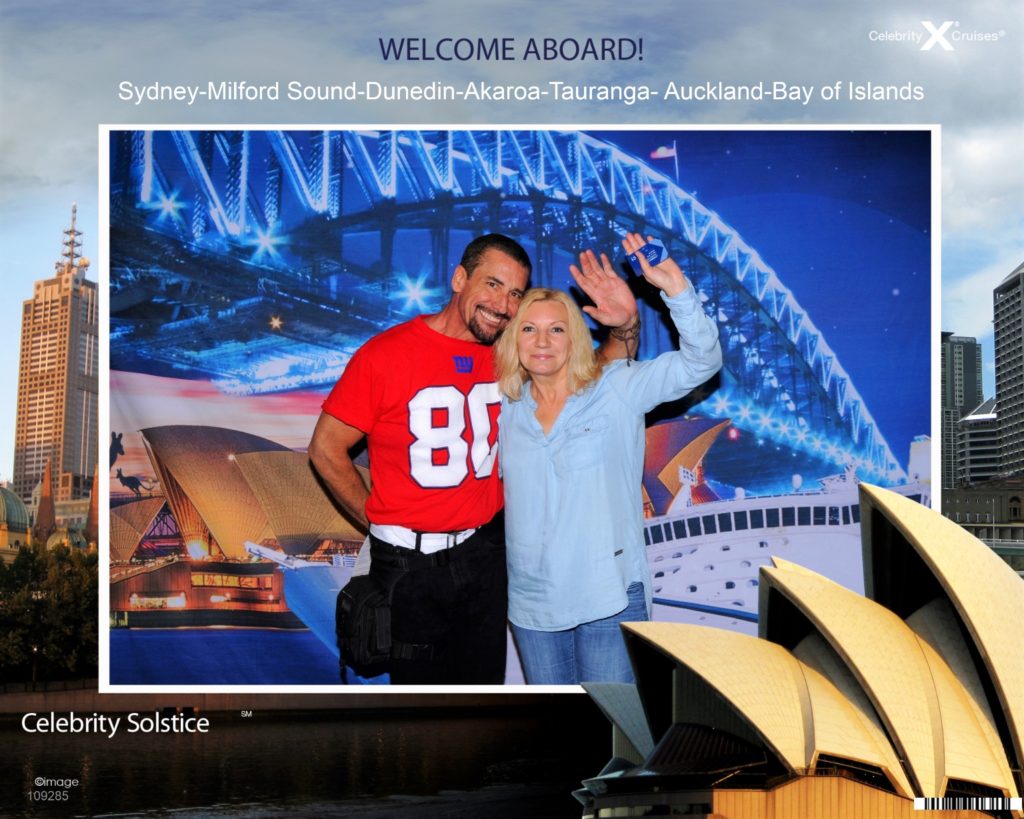
Before reaching Fiordland, we spent a couple days traversing the Tasman Sea, just chilling, enjoying the shows and food on the ship. On the third day we arrived at Fiordland, where we were able to view 3 fiords or sounds: Milford Sound, Doubtful Sound and Dusky Sound. A fiord is a long, narrow arm of the sea bordered by steep cliffs: usually formed by glacial erosion.
We reached Milford Sound in the early morning. Situated on the west coast of the South Island, Milford Sound is the most famous. It is a fusion of spectacular natural features with amazing visual cues around every corner. Milford Sound has some of the highest sea cliffs in the world rising 1,200 meters above the water.
The Captain slowed the ship as we began to enter Milford Sound, New Zealand’s jaw-dropping South Island fiord, famously referred to as the Eighth Wonder of the World by Rudyard Kipling.
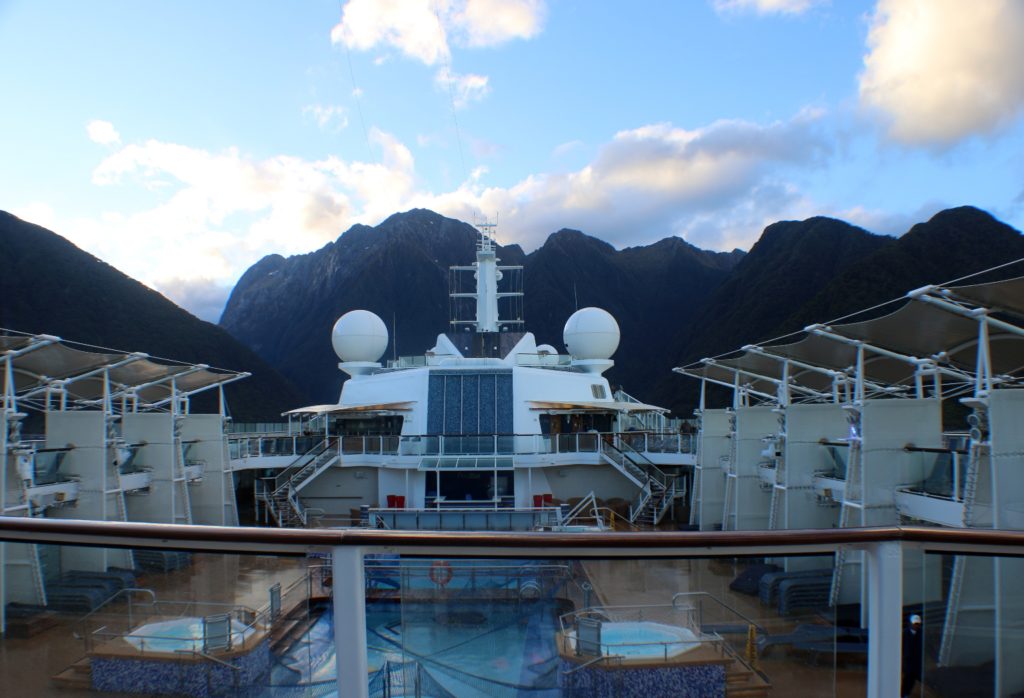
The first European to see this scene was Captain Stokes who sailed into the sound upon the survey ship HMS Acheron in 1851. Today, this pristine and startlingly beautiful coastline remains unchanged from when he first saw it and still has the power to wow all who visit.
Milford Sound is named after Milford Haven in Wales. The Māori named the sound Piopiotahi after the thrush-like piopio bird, now extinct.
Our ship gently eased herself around the cliffs faced with sheer sided mountains and waterfalls. There are two permanent waterfalls in the fiord, Stirling Falls and Lady Bowen Falls. The first waterfall we observed was Stirling Falls.
Milford’s second-highest waterfall, Stirling Falls, is a staggering 151m in height. Our captain claimed that Stirling Falls is three times the height of Niagara Falls, but the 1,300m mountain behind displaces this incredible height. This is the famous waterfall that Hugh Jackman ‘jumped off’ of in the movie Wolverine.
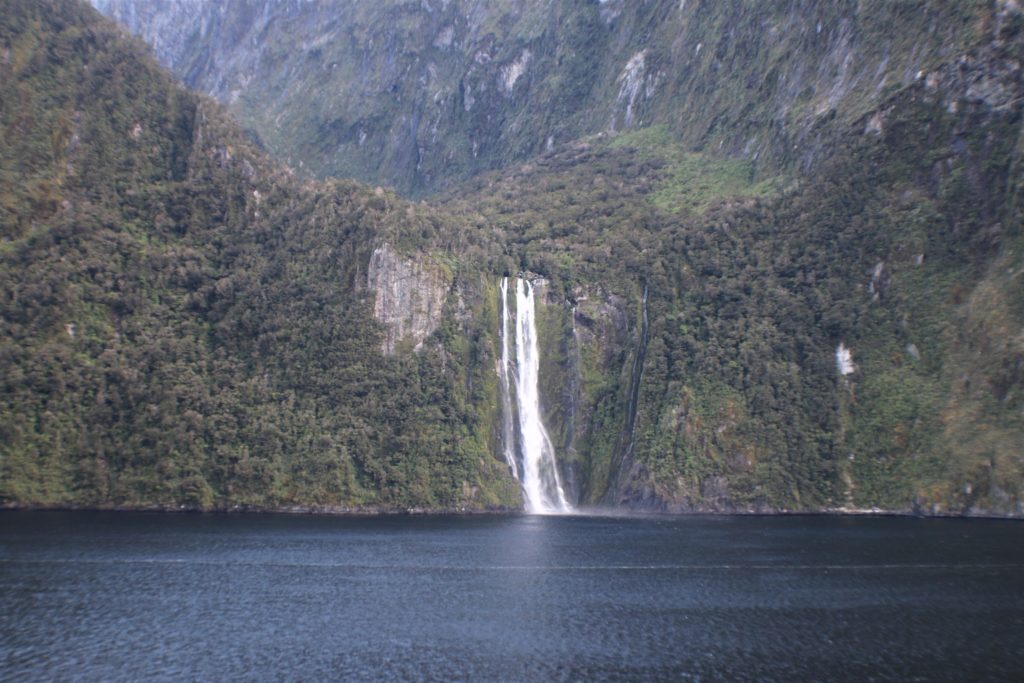
This waterfall doesn’t appear that enormous from a distance, does it? Captain Stirling, who discovered the waterfall chose to name the waterfall after himself; less of a gentlemanly move than Captain Bowen who named the Lady Bowen Falls after his wife. 🙂
The U-shape glacially carved valley right above the waterfall is called a hanging valley.
The permanent Lady Bowen Falls is Milford’s highest waterfall at 162m. Not only breathtakingly beautiful, without it Milford Sound couldn’t operate; with it being the sole source of power and water. Occasionally, in heavy rain or dry spells she has a few overflow and underflow problems, leaving Milford Sound without electricity for periods but her beauty makes up for her occasional flow issues. She quadruples in volume during Milford’s epic storms.
It got very crowded in the front of the ship upon approaching the Falls.
Finally, we got to take some pictures with the Falls in the background.
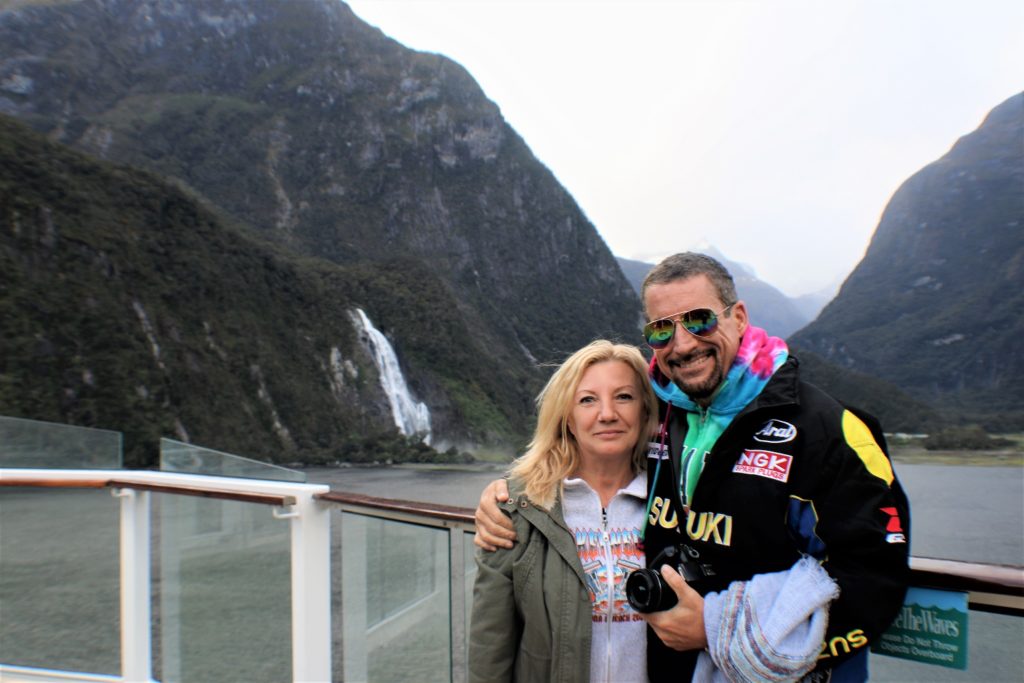
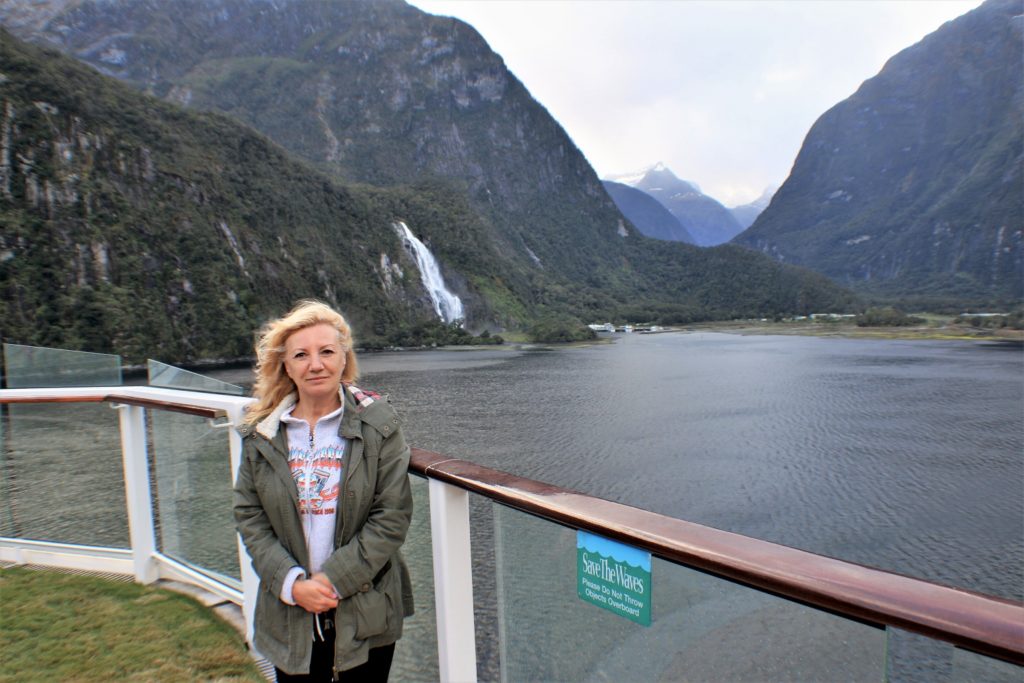
Lady Bowen Falls close-up.
Passing by the snow-capped peaks of the Southern Alps. Rain falls in Fiordland on over 200 days each year, luckily this wasn’t one of them and as we turned at Milford the wispy clouds cleared with the sun shining on the snow capped peaks.
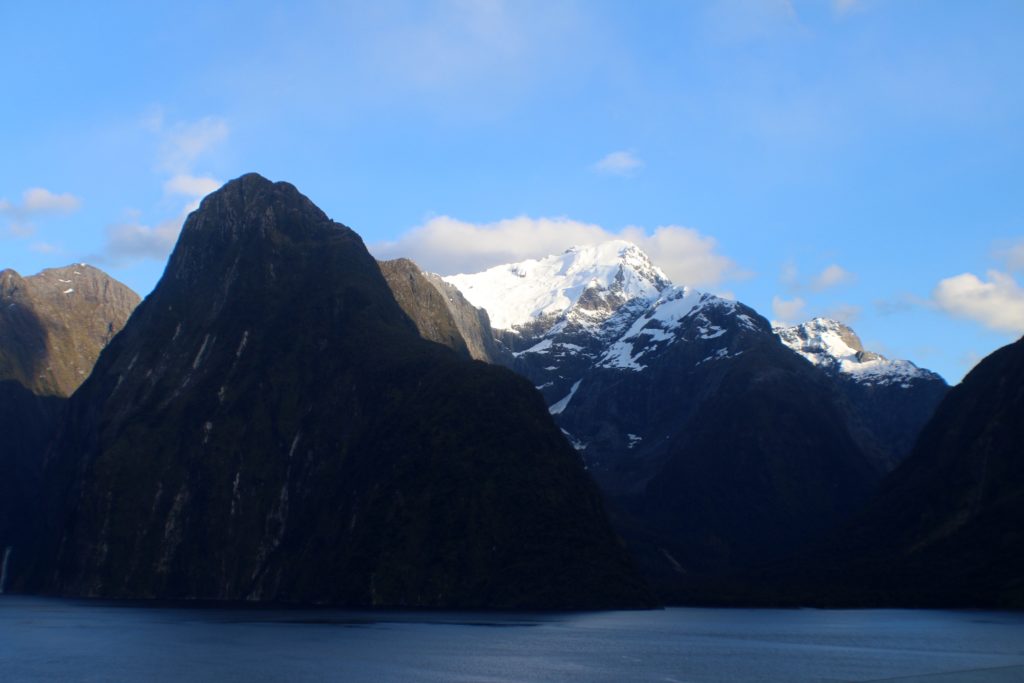
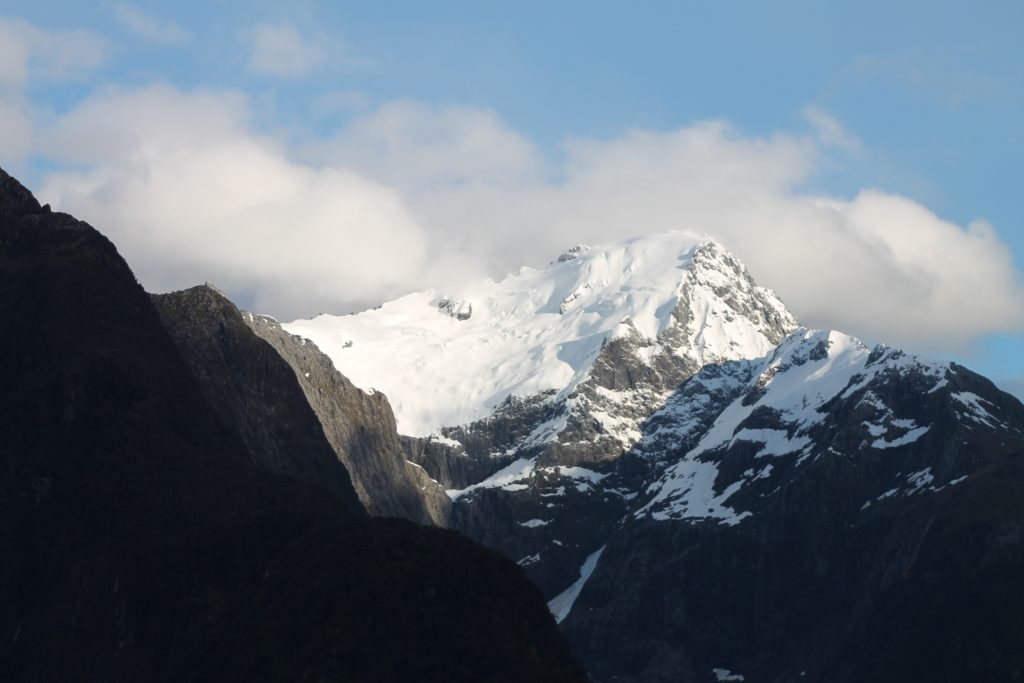
Most of the time we walked around the ship trying to get a better view, but sometimes, we were just sitting in comfortable chairs on the upper deck enjoying coffee and some snacks. It was pretty chilly outside at that time.
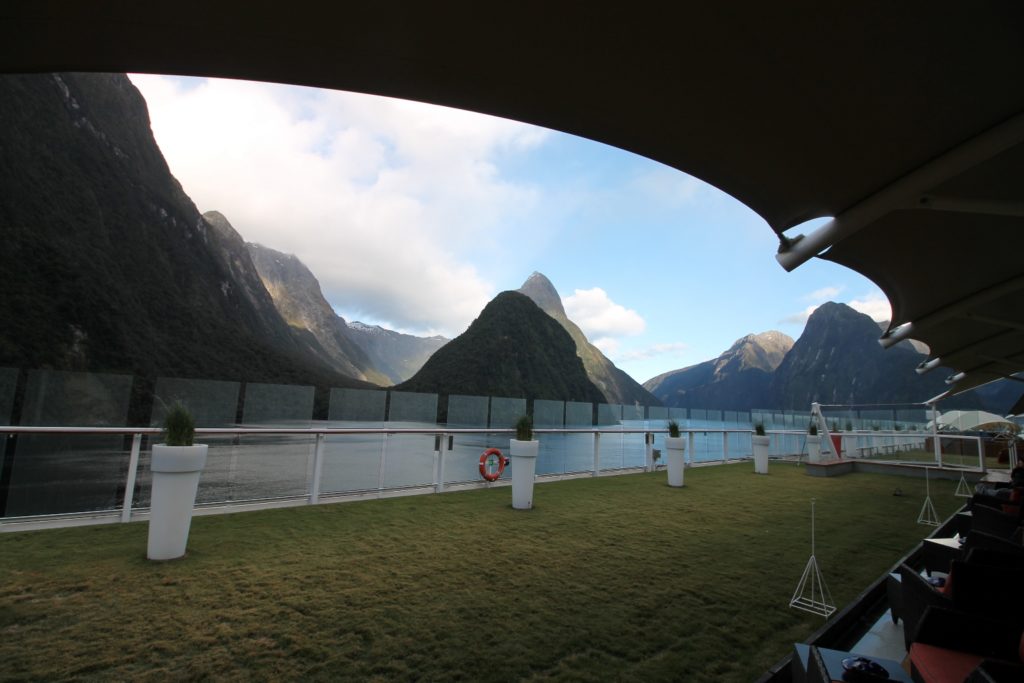
The view was breathtaking even from our cabin balcony.
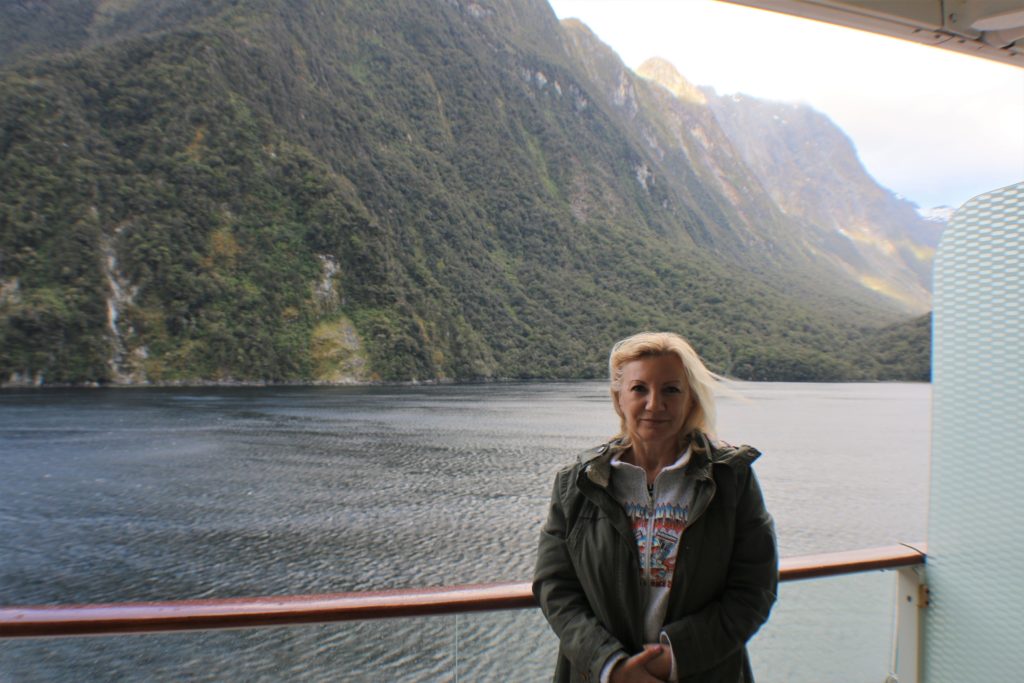
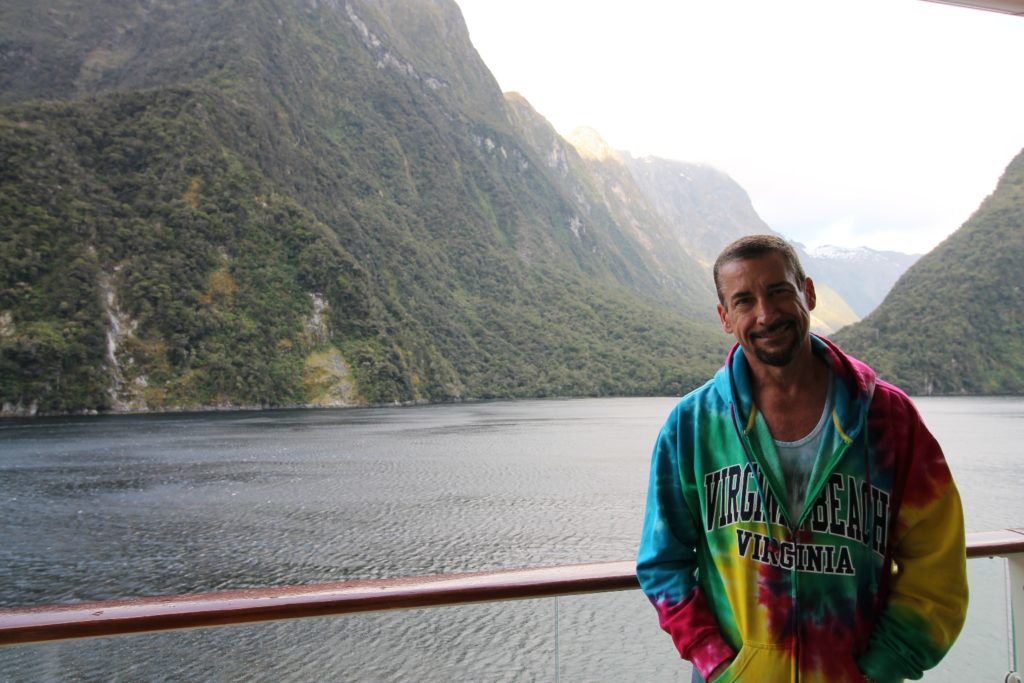
Leaving Milford Sound. Here we could see some dolphins from the ship. Resident marine life of Fiordland includes the Bottlenose and Dusky Dolphins, Fur seals and Fiordland penguins.
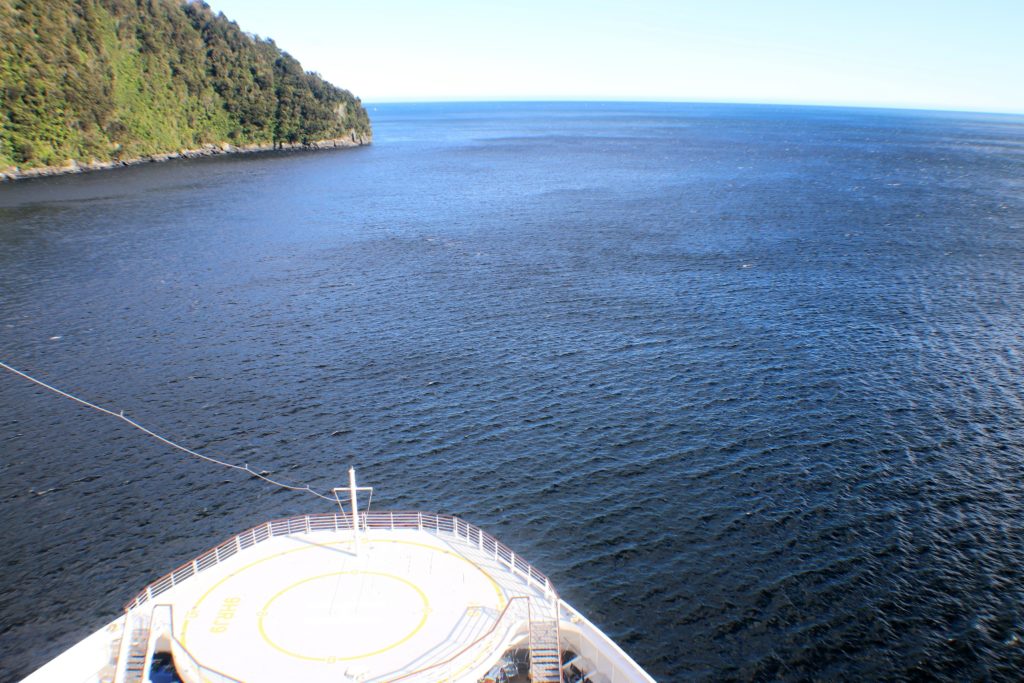
Later in the day, we moved through Doubtful and Dusky Sounds. Unlike Milford Sound, Doubtful and Dusky are not accessible by road, so the only way to properly see this part of the world is by cruise ship.
Doubtful Sound is a very large and naturally imposing fiord in Fiordland, in the far South West of New Zealand. It was still chilly and very windy at the time we were cruising Doubtful Sound. At 421 meters, Doubtful Sound is the deepest of New Zealand’s fiords.
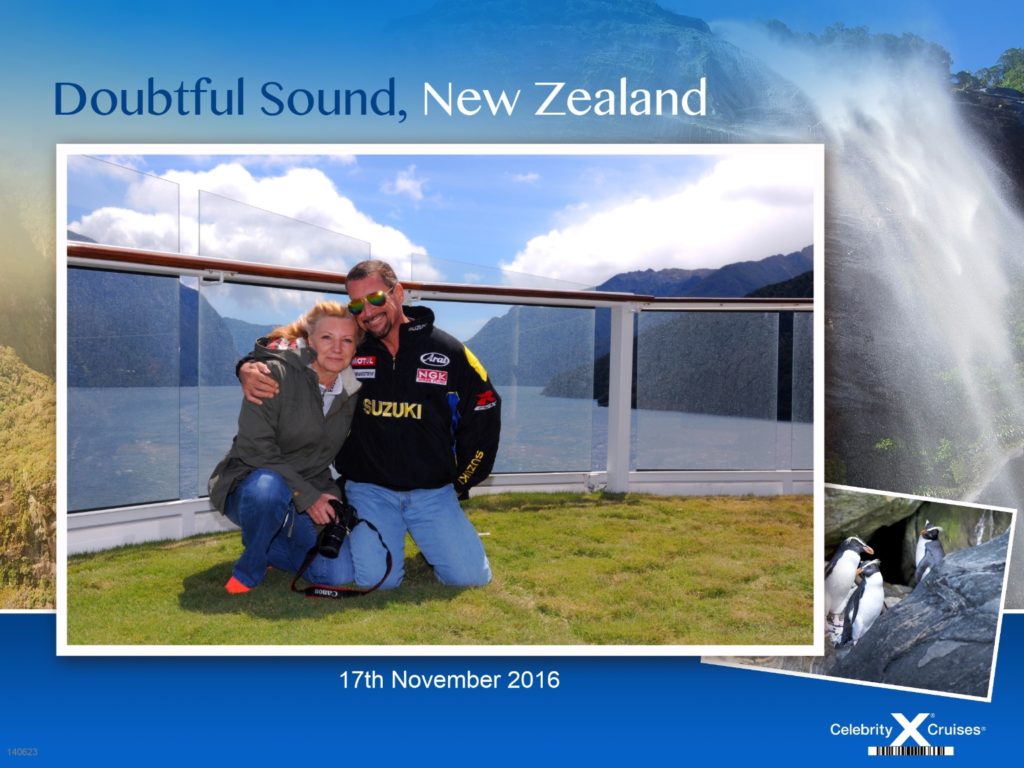
Doubtful Sound was named ‘Doubtful Harbour’ in 1770 by Captain Cook, who did not enter the inlet as he was uncertain whether it was navigable under sail. It was later renamed Doubtful Sound by whalers and sealers.
One of many beautiful waterfalls of Doubtful Sound.
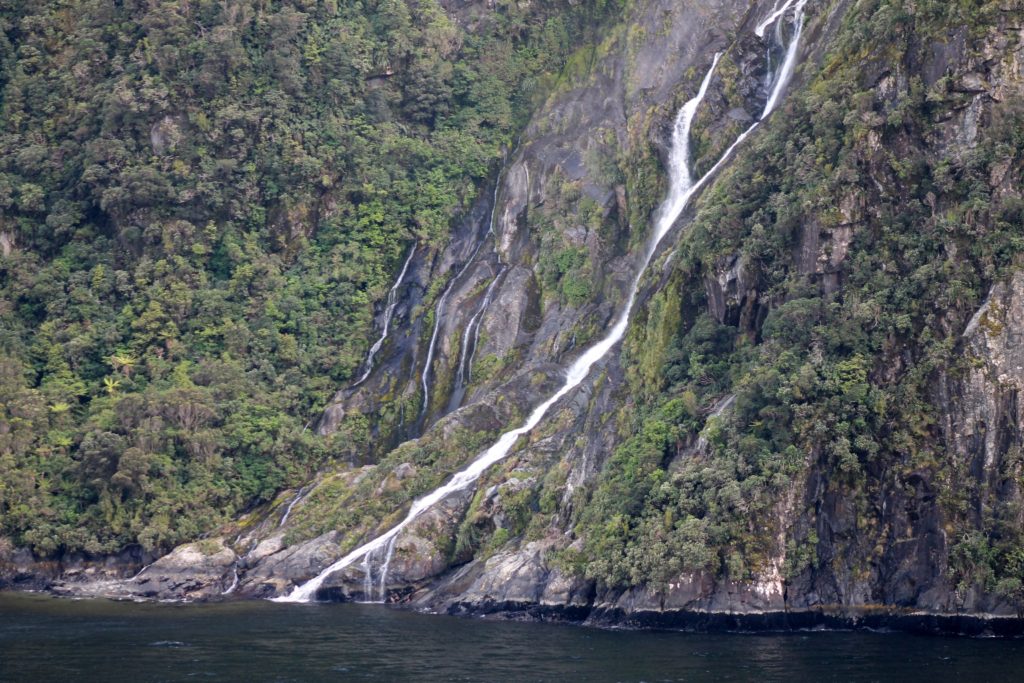
Passing the numerous majestic cliffs.
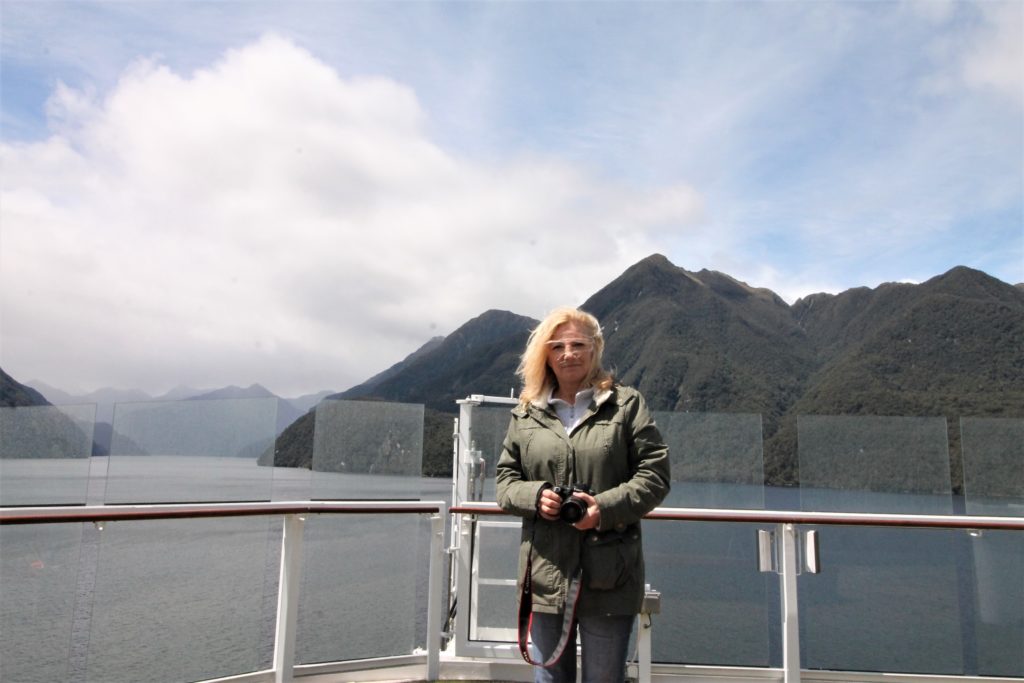
These cliffs looked fabulous covered in sunshine.
Moving onto Dusky Sound. Captain Cook and his crew were the first Europeans to visit Fiordland in 1773, spending five weeks in Dusky Sound.
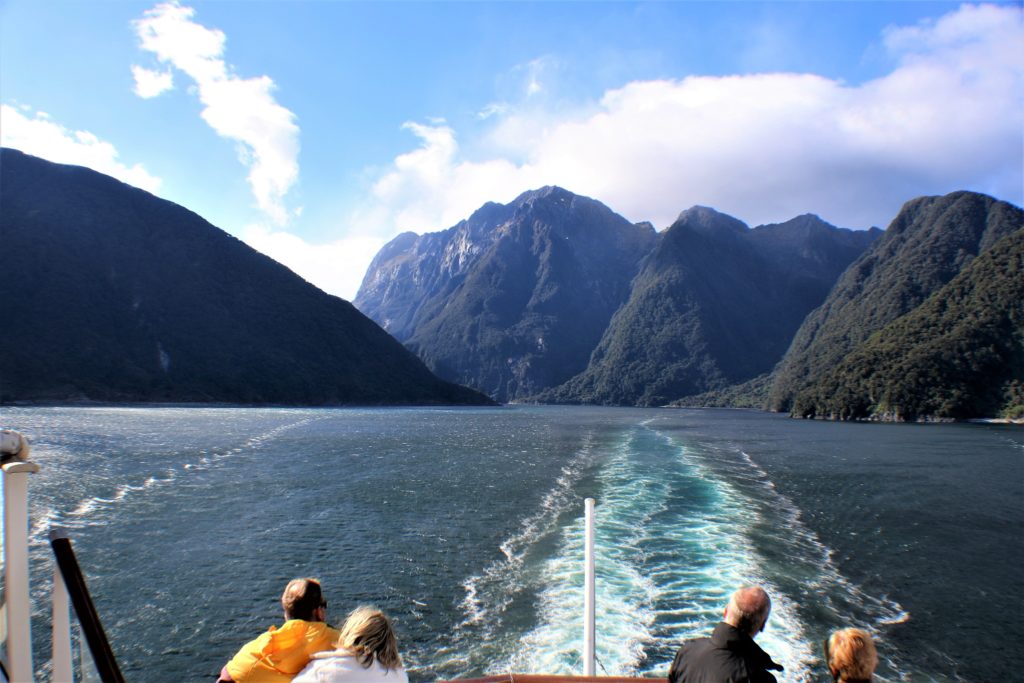
Dusky Sound is one of the most remote, complex and largest fiords on the south west corner of New Zealand, in Fiordland National Park. Due to the sheer-sided cliffs and the high precipitation, it’s an area which boasts hundreds of spectacular cascading waterfalls, especially during the rainy season.
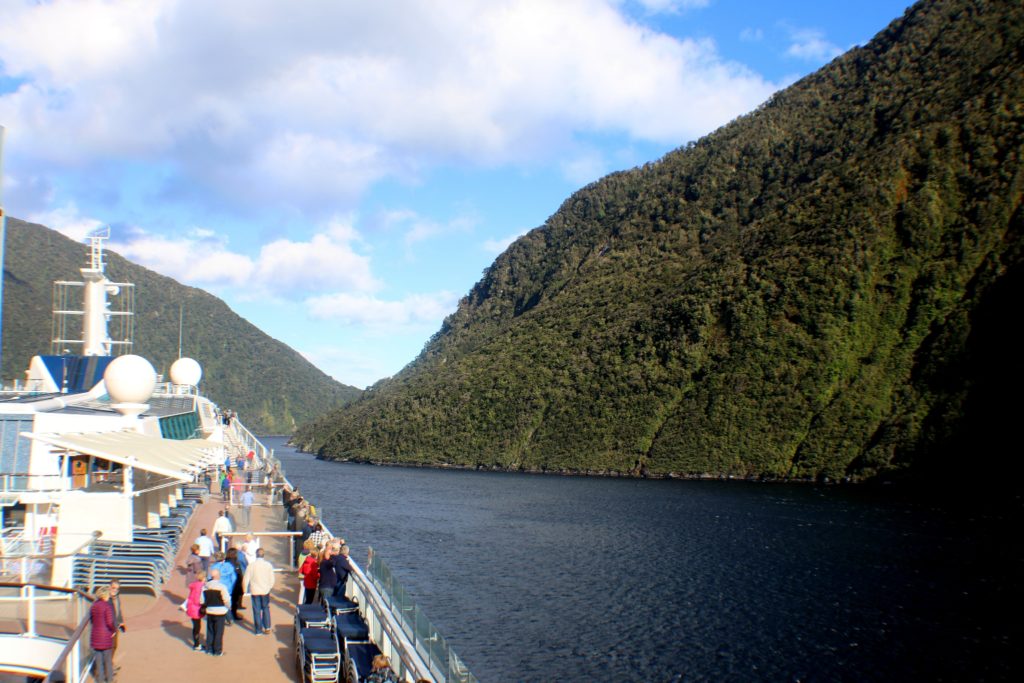
Dave was trying to get a picture of a seal (was too far away).
The cliffs were so close to the ship. Within the Fiord it’s amazing how maneuverable the ship is, especially considering its size.
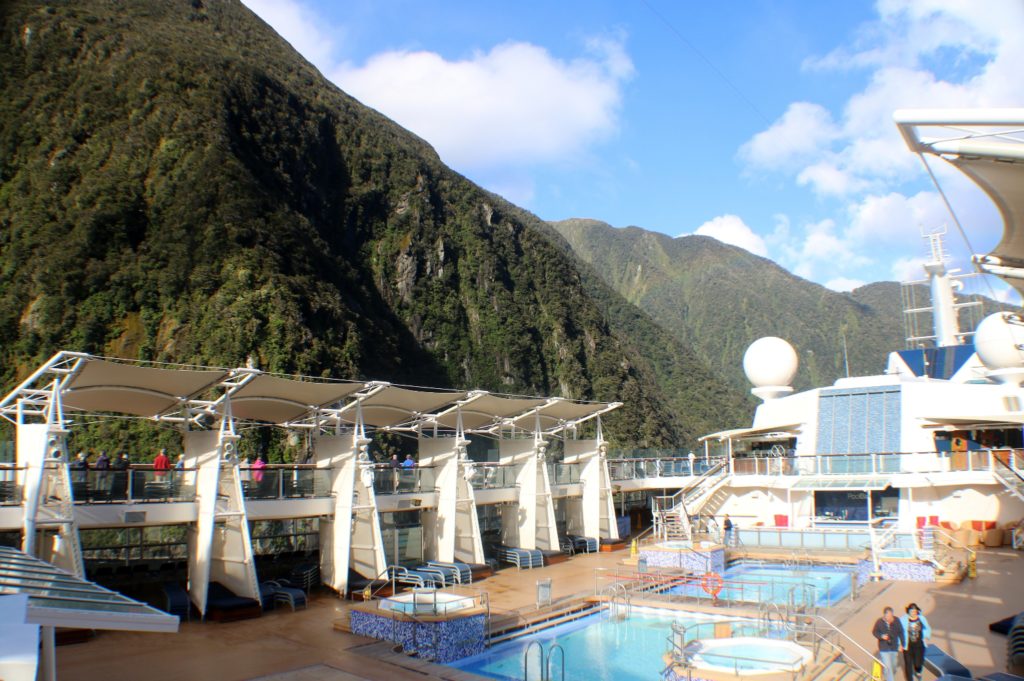
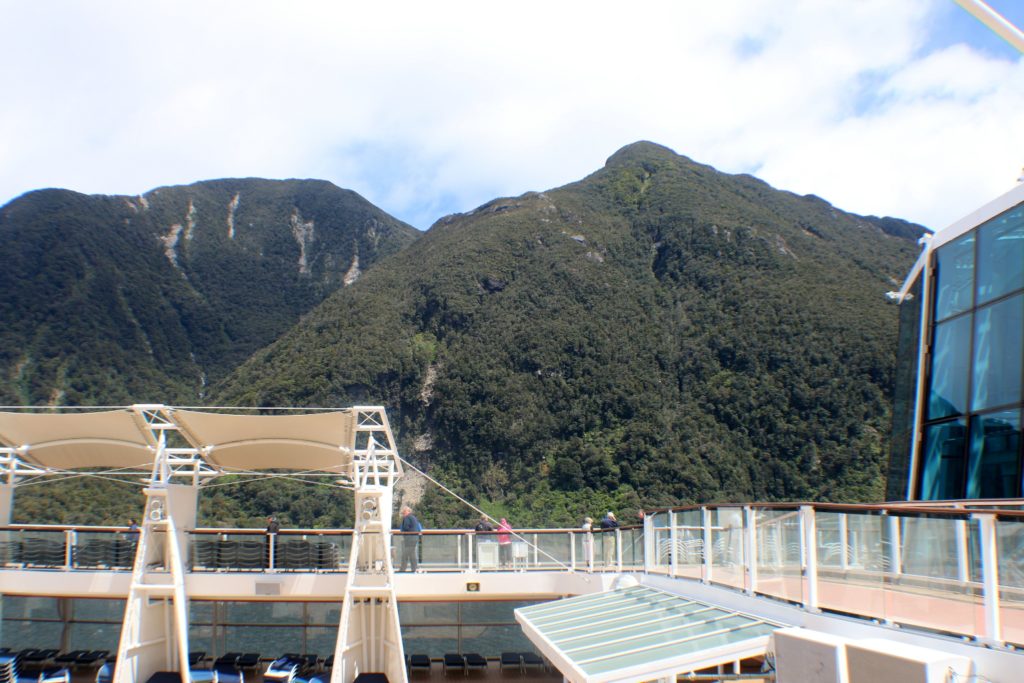
We noticed a waterfall on the top of the cliff.
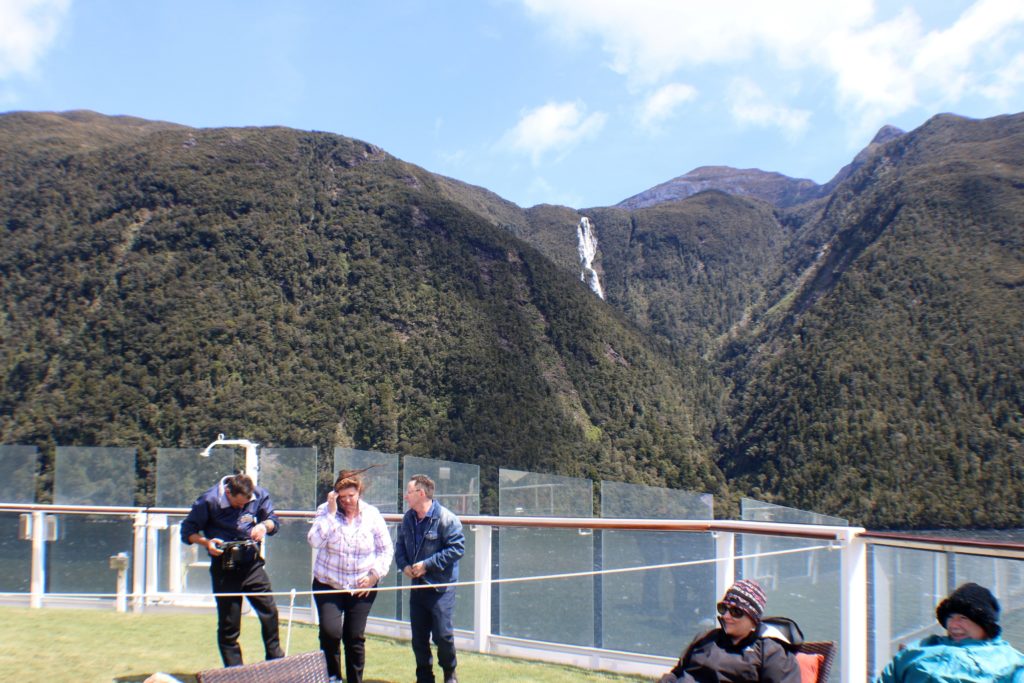
This is real grass on the ship.
During our journey, we saw numerous cute islands like this one.
Or those small islands below.
And waterfalls, of course.
We were able to enjoy the view from the couch in our cabin during a break from the chilly weather outside.
And we had to take a selfie with our brand new selfie stick, of course. 🙂
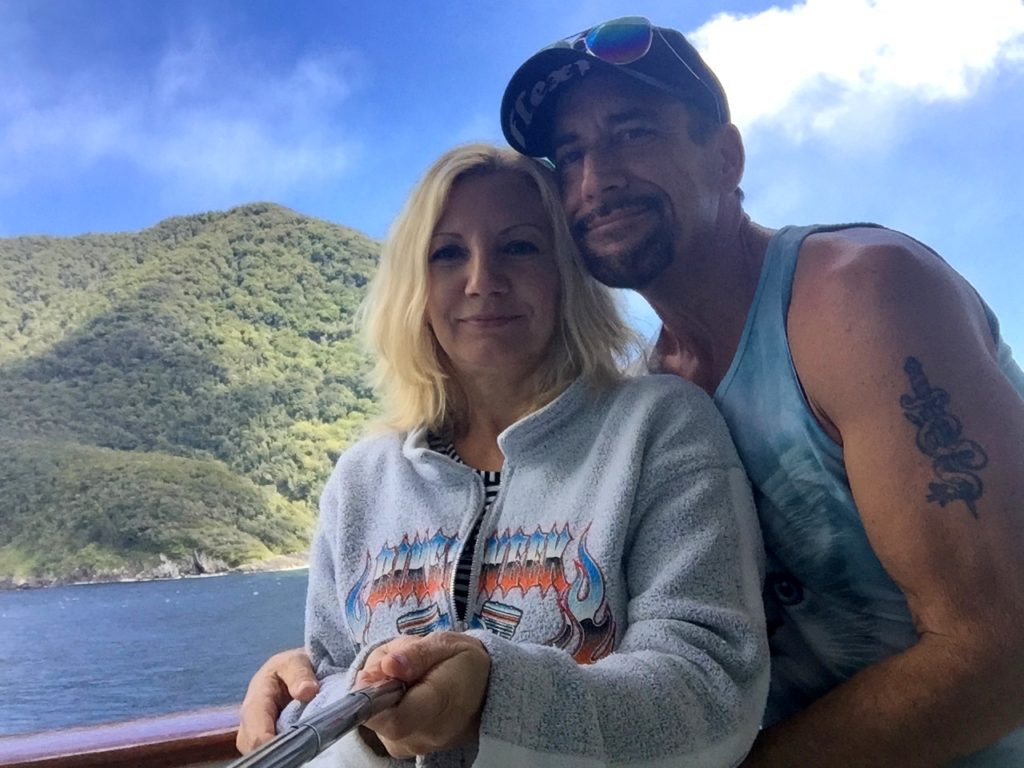
Leaving beautiful Fiordland for our next destination – the city of Dunedin.
